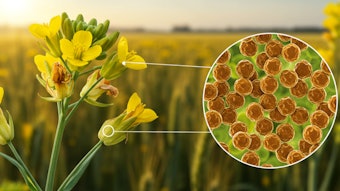
A new scientific review, to appear in the November 2025 edition of Toxicon, sheds light on an as-yet underexplored frontier for active cosmetic ingredients: animal venoms. The article provides a comprehensive overview for product formulators, detailing both the opportunities and challenges in this emerging field. Here, we provide a summary of the article, in addition to a few recent literature examples that we uncovered.
Log in to view the full article
A new scientific review, to appear in the November 2025 edition of Toxicon, sheds light on an as-yet underexplored frontier for active cosmetic ingredients: animal venoms. The article provides a comprehensive overview for product formulators, detailing both the opportunities and challenges in this emerging field. Here, we provide a summary of the article, in addition to a few recent literature examples that we uncovered.
Bees, Snakes, Spiders and Salamanders
Bee venom: According to the review, research has shown that bee venom, the most studied ingredient, can effectively promote anti-aging effects, hydration and overall skin rejuvenation. In relation, a previous report in Molecules highlighted how bee venom stimulated human epidermal keratinocyte proliferation and migration. Also, its application with hydrogel increased collagen formation and it supported wound healing due to its anti-inflammatory, antimicrobial and antioxidant activity.
More recently, a report in the International Journal of Molecular Sciences demonstrated how bee venom and its main compound, melittin, impart not only antioxidant and anti-inflammatory, but also anti-aging activities. An animal model revealed the ingredient improved dermal and epidermal thickness, boosted collagen fiber content, increased hydroxyproline and hyaluronic acid levels, and more.
Snake venom: Snake venom peptides have also gained attention, the review reports, for their ability to reduce the appearance of wrinkles through muscle relaxation, offering a topical alternative to more invasive procedures or botulinum toxin.
Several years ago, an article in Cosmetics & Toiletries described the ingredient dipeptide diaminobutyroyl benzylamide diacetate (DABBA), which was modeled after a toxic protein found in venom of the temple viper. It acted by inhibiting the nicotinic acetylcholine receptor, blocking muscular contraction but in a transient and reversible manner.
In relation, a recent review in the Journal of Drug Delivery Science and Technology describes the development of a nanotechnology approach to deliver therapeutic snake venom. Per the article, venoms derived from snakes have a diverse composition of proteins and polypeptides with biological and pharmacological properties. "The use of bioactive compounds associated with different types of nanosystems has been ... used successfully in several pharmacological applications," the article states.
Other 'creepy crawly' venoms: Lesser-known sources, such as spider and salamander toxins, also were cited in the review for their antioxidant and anti-melanogenesis properties.
In connection, as previously reported, a paper published in Bioorganic & Medicinal Chemistry described the work of researchers in France who studied the venom of scorpions, snakes, spiders and amphibians to identify new molecules with an inhibitory activity on melanogenesis. The venoms were screened for their capacity to inhibit mushroom tyrosinase using (l-DOPA) as substrate; Argiope lobata spider venom proved to be the most active.
Such compounds could open new avenues for addressing pigmentation issues and protecting skin from environmental damage.
Compiling venom application research: Interestingly, a recent article in Integrative Organismal Biology describes an integrated database for the study of venoms in general and their applications, demonstrating the rising interest in this under-explored territory.
Obstacles to Application
The path from "venom to vanity" is not without its obstacles, the review emphasizes, highlighting key challenges:
- A significant gap in clinical trial data;
- Rigorous testing to bring these products to market; and
- Regulatory and ethical hurdles — sustainable and ethical sourcing is paramount. Synthetic alternatives could be the answer.
Immense Innovation Potential
The review concludes that while the use of animal venoms in cosmetics is still in its early stages, the potential for innovation is immense. For product formulators, this represents a unique chance to pioneer new categories of high-performance skin care.
Success will depend on a commitment to scientific validation, ethical practices and navigating the evolving regulatory framework.










